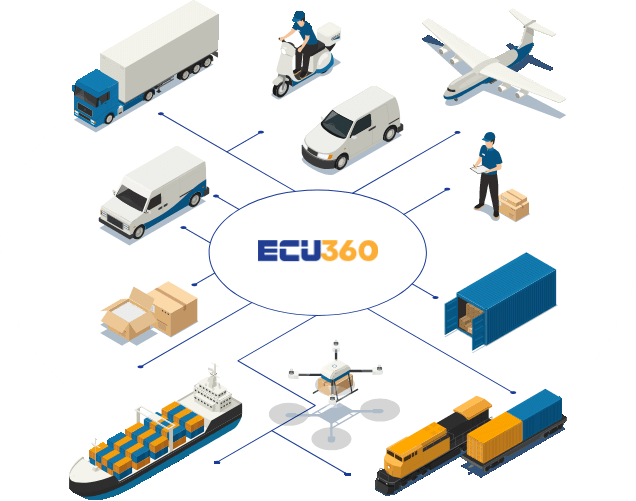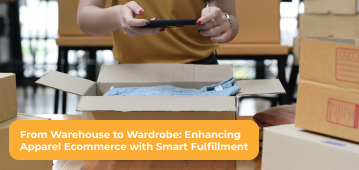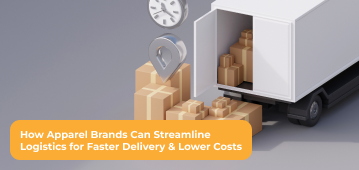FCL Shipping: Your Complete Guide to Full Container Load Solutions
In the world of global cargo shipping, businesses looking for reliable, cost-effective, and secure logistics options often turn to FCL shipping—also known as Full Container Load. Whether you’re a growing exporter or an established enterprise moving bulk goods, FCL offers unmatched benefits in terms of speed, safety, and efficiency.
In this complete guide, we’ll break down everything you need to know about FCL freight services, including how it works, when to use it, and how it compares with other shipping methods like LCL. If you’re seeking FCL logistics solutions, this is the ideal starting point.
What is FCL Shipping?
FCL (Full Container Load) shipping refers to a method of transporting goods where one shipper occupies an entire container, regardless of whether the container is filled to capacity. This model is best suited for high-volume shipments, and it eliminates the need to share container space with other shippers (unlike LCL—Less than Container Load).
FCL freight services are widely used in international container shipping because of their simplicity and the control they offer over cargo handling.
Key Benefits of Full Container Load Shipping
Opting for FCL shipping brings several advantages, especially for businesses that value efficiency and minimal handling.
- Faster Transit Times
FCL shipments are typically faster because they move directly from origin to destination without multiple stops for loading or unloading goods from different shippers. This port-to-port delivery system streamlines the process. - Reduced Risk of Damage
Since you’re not sharing space with other shippers, your cargo is not repacked or shifted during transit. This reduces the risk of damage, contamination, or loss—making FCL a preferred choice for fragile or sensitive items. - More Cost-Effective for Bulk Shipping
Though FCL might seem expensive upfront, it becomes more economical for large volumes. The full container shipping rates are often lower per unit compared to LCL when the container is efficiently used. - Increased Security
With only your goods inside the container, FCL offers greater control and visibility throughout the shipping process. The container is sealed at origin and typically remains unopened until it reaches its destination.
When to Choose FCL Over LCL
FCL and LCL are both popular sea freight container options, but they serve different business needs. Here’s when FCL is the better choice:
- You are shipping 12–14 CBM or more (about half to full 20-foot container).
- Your cargo is high value or fragile and needs minimal handling.
- Time-sensitive shipments requiring faster delivery.
- You want to minimize risk and maximize control.
If your cargo doesn’t fill an entire container and cost is a concern, LCL might be a better fit, but it involves sharing space and higher handling risks.
Understanding Container Load Capacity and Sizes
Before booking an FCL shipment, it’s essential to understand shipping container sizes and how much cargo they can hold.
Common Container Sizes:
- 20-foot container (TEU) – Holds ~33 CBM of cargo
- 40-foot container (FEU) – Holds ~67 CBM of cargo
- 40-foot High Cube – Offers ~76 CBM of cargo space
Your choice of container should align with the volume and weight of your cargo. Freight forwarding companies can help you determine the most efficient option.
How FCL Shipping Works: Step-by-Step Process
Here’s a simplified look at how FCL freight services typically operate:
- Booking and Planning
- The shipper books a container through a freight forwarder or carrier.
- Shipping documents and customs paperwork are prepared.
- Container Stuffing
Cargo is loaded and sealed in the container at the warehouse or shipping facility. - Transport to Port
The container is moved via truck or rail to the port of origin. - Port Loading
It is loaded onto a cargo vessel and begins its international container shipping - Transit
The container travels to the destination port without stops for repacking or consolidation. - Destination Port Unloading
Once at the destination port, the sealed container is cleared through customs. - Final Delivery
The container is transported to the consignee’s location where it is finally unpacked.
FCL Shipping Rates and What Affects Them
Several factors influence full container shipping rates, including:
- Distance between ports – Longer routes naturally cost more.
- Container size and type – High cube or refrigerated containers may incur higher costs.
- Peak seasons – Rates increase during global shipping surges.
- Port fees and customs duties – Local regulations and port-specific charges can add up.
- Fuel surcharges – Often added to base rates depending on global fuel prices.
To get the most value, consider partnering with experienced freight forwarding companies like ECU 360 that offer transparent pricing and end-to-end logistics solutions.
FCL vs LCL: A Quick Comparison
| Feature | FCL Shipping | LCL Shipping |
|---|---|---|
| Volume Requirement | High (Ideal for >12 CBM) | Low (Ideal for <12 CBM) |
| Cost Efficiency | More cost-effective for bulk loads | Cost-effective for small loads |
| Handling | Less handling, lower damage risk | Multiple handling points |
| Speed | Faster transit | Slower due to consolidation/delivery |
| Security | More secure | Shared container risk |
Global Cargo Shipping Trends to Watch
The landscape of global cargo shipping is evolving with new technologies and sustainability initiatives. Key trends influencing FCL shipping include:
- Digitization of logistics for real-time tracking and transparency.
- Smart container technology that monitors temperature, humidity, and tampering.
- Sustainable shipping with fuel-efficient vessels and eco-friendly containers.
As the world grows more connected, Full Container Load solutions will continue to play a pivotal role in meeting the demands of global trade.
Why Choose ECU 360 for FCL Freight Services?
At ECU 360, we specialize in streamlined, technology-driven FCL logistics solutions tailored for exporters, importers, and enterprise clients. With years of experience in international container shipping, we provide:
- Competitive full container shipping rates
- Real-time tracking and documentation
- Expert customs clearance assistance
- Reliable port-to-port delivery across major global routes
Whether you’re shipping from Asia to Europe or managing high-volume exports from India, our team is here to help you move faster, safer, and smarter.
Conclusion: Is FCL Shipping Right for You?
FCL shipping is a smart, scalable solution for businesses looking to simplify their global cargo shipping. If your shipment volume justifies a full container, you gain better security, faster transit, and lower per-unit costs.
Before deciding, always evaluate your cargo size, delivery deadlines, and budget. And when you’re ready, consult a trusted freight forwarding partner like ECU 360 to help navigate the complexities of Full Container Load logistics with confidence.
Ready to ship smarter with FCL?
Get in touch with ECU 360 for expert guidance and real-time booking solutions tailored to your shipping needs.
Like





Comments